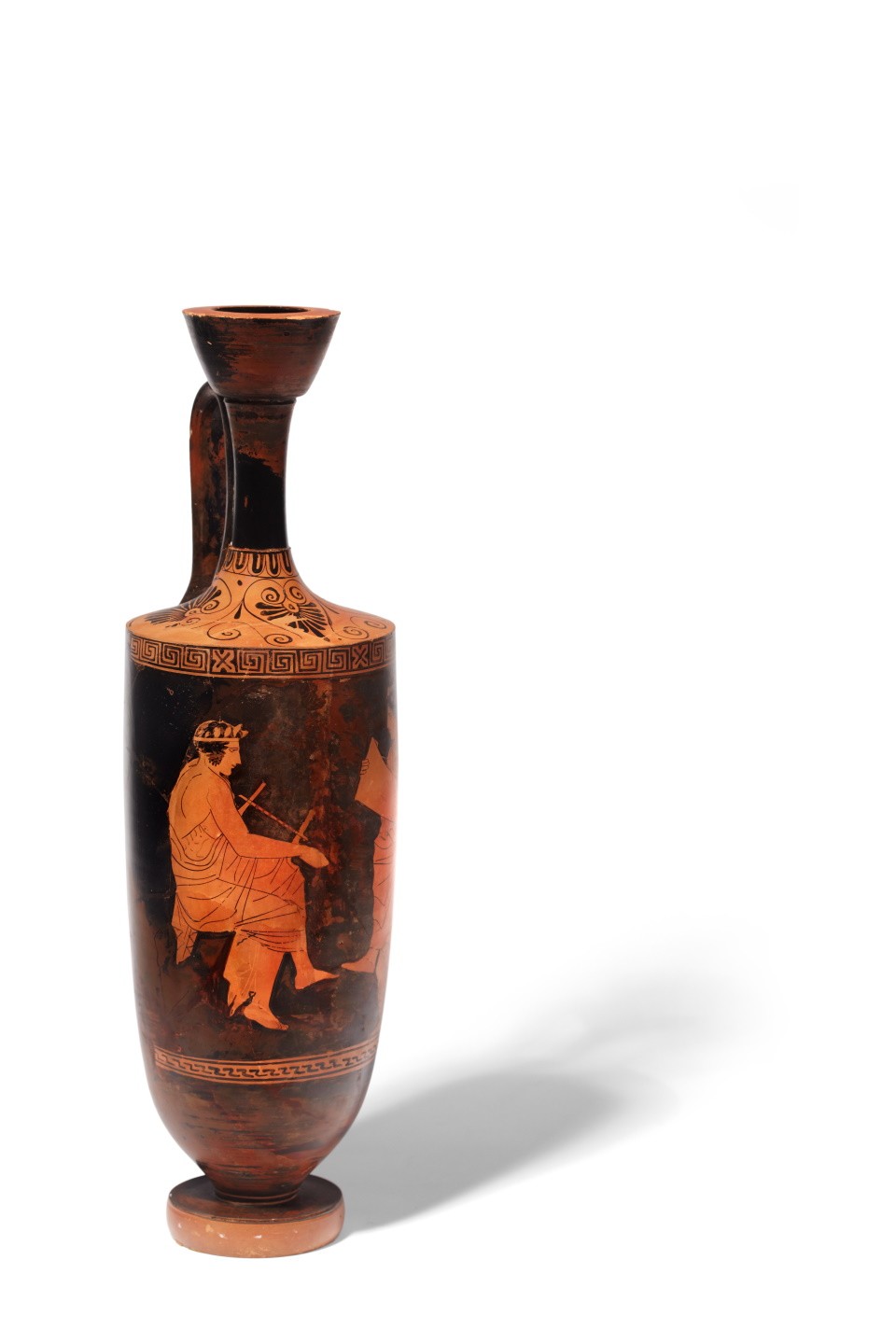Das Lyraspiel und der Gesang bzw. die Rezitation vereint Apollon und die Muse Klio, die Rühmende (abgeleitet von griech. klein κλεῖν 'rühmen', 'preisen') in Zweisamkeit.
Klio ist vor allem als Muse der Geschichtsschreibung und 'Schutzpatronin' der Historiker bekannt. Sie gilt aber auch als Muse des Lyraspiels. In dieser Funktion ist sie mit Apollon in seiner Eingeschaft als Gott der Dichtkunst, der Musik und des Gesangs gleichberechtigt zu sehen.
Ihr Attribut, die weit auseinander gezogene Schriftrolle, die sie in den Händen hält, enthält vielleicht den Hymnus, den beide instrumental und gesanglich verkünden. (AVS)
en









